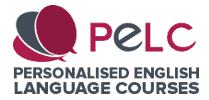The relationship between SLA research and second language pedagogy
My urge to explore the relationship between Second Language Acquisition (SLA) research and second language pedagogy came about after an impulsive tweet by “teacher mentor” David Deubelbeiss in response to a recent article of mine:

I wrote a fairly impartial post about Dogme ELT. When I claimed that Dogme is an approach that teachers could “dip into from time to time”, Dave went off on one. Being a voracious reader and the author of hundreds of SLA research papers himself (NOTE: irony), Dave essentially rubbished the idea of an ‘eclectic approach’ to language teaching. This approach refers to a teacher's use of activities and techniques which derive from a range of language teaching approaches and methodologies.
When I tweeted my reply, which pointed Dave in the direction of eclecticism via an article by the British Council, he deleted all traces of our intriguing little Twitter feed.
For me, an eclectic approach to language teaching doesn’t require the authorisation of years of SLA research. In the name of averting tedium and keeping students on their toes, can’t EFL teachers get students to focus on lexical chunks in reading one minute, and tackle a communication gap activity the next? Besides, almost all modern coursebooks embed a mixture of approaches and methodologies. Not that I advocate the use of coursebooks to any great extent.
Overall, as a result of my brief exchange with Mr Deubelbeiss, the relationship between SLA research and second language pedagogy is a topic that’s occupied my mind for over a month.
As I shall argue, it’s a precarious relationship at best.
SLA research and second language pedagogy - A precarious connection at best
The changing nature of SLA research hardly gives open-minded pedagogists and instructors peace of mind. Moreover, there seems to be so little agreement among researchers with regard to certain practices in the field of SLA. Here are two areas of SLA which have found little consensus among researchers regarding the way they can be exploited in the classroom:
Corrective feedback
The myriad of views I’ve just read concerning corrective feedback (CF) (in Ellis and Shintani, 2014) has done little to inspire my pedagogical approach to error correction. Ellis and Shintani stated the following in their conclusion of a chapter titled ‘Corrective Feedback’:
Both immediate and delayed CF may be beneficial. To date there is no clear evidence that one is superior to the other, so teachers need to experiment with the timing of oral CF.
The words “To date there is no clear evidence” are very worrying indeed. Why do Ellis and Shintani even mention the topic of corrective feedback if there’s “no clear evidence”?
Krashen’s Input Hypothesis versus Swain’s Output Hypothesis
I also consider the roles of ‘input’ and ‘output’ as other dubious areas of SLA research. Krashen’s (1985) comprehensible input hypothesis affirmed that second language acquisition occurs when a learner is able to comprehend grammatical forms that are slightly beyond the current state of the learner’s interlanguage. There has to be masses of input for this state to occur. In other words, reading and listening should take precedence over speaking and writing.
Inevitably, someone would quickly step up to challenge Krashen’s comprehensible input hypothesis. Canadian linguist, Merrill Swain, entered the fray with her, you guessed it, comprehensible output hypothesis.
Originally, Swain (1985) noticed that learners in immersion programmes, that is programmes where the L2 was taught by using it as the medium of instruction for teaching the content of other school subjects, failed to attain significant levels of grammatical accuracy. This was despite the fact that the learners had been exposed to a great deal of comprehensible input.
Swain attested to three functions of output:
- Noticing function - Learners run into gaps between what they want to say and what they are able to say. Therefore, they ‘notice’ what they do not know or only know partially in the L2;
- Hypothesis-testing function - When a language learner says something, there is always a tacit hypothesis forming the basis of their utterance. For example, it may be a hypothesis related to grammar. Through saying something, the learner tests this hypothesis and gains feedback from an interlocutor. Then, the learner may reprocess the hypothesis based on the feedback
- Metalinguistic function - Learners reflect on the language they learn. Output allows them to internalise linguistic knowledge
Overall, there’s little rocket science involved with the input and output hypotheses. Isn’t it obvious that students need to read, listen and speak?
English language teachers stuck in their comfort zones
I’ve been teaching for nearly sixteen years. Naturally, with all the time that’s passed, I’ve developed an approach to teaching which both my students and I feel comfortable with.
I’m all for broadening horizons and getting out of comfort zones. However, without meaning to sound pompous, making too many tweaks to one’s teaching system might do more harm than good. Simply, as all the contradictory SLA research attests to, there’s no right answer when it comes to second language pedagogy. No teacher or SLA researcher has the right answer.
Hugh Dellar - The voice of logic and reason - versus SLA research
So, I’m not against comfort zones and experienced teachers who are loath to make significant tweaks to their teaching approach.
However, I still believe that experienced teachers should be open to making ‘additions’ to their stock of teaching techniques.
I recently watched an interview on the Youtube channel ELT Under the Covers. EFL teachers Rich and Neil interviewed legendary author, teacher and teacher trainer, Hugh Dellar.
If ever I needed to watch something which confirms my belief in the shaky connection between SLA research and second language pedagogy, then this interview is it.
A pivotal moment in Hugh’s early development as an educator was when he read Michael Lewis’s book The Lexical Approach. One of Lewis’s major arguments is that teachers tend to view teaching vocabulary in terms of relaying the meaning of single-word items, namely nouns.
However, as Hugh said in the interview:
Words work together in often arbitrary ways - there’s often no logic to it.
All right - a ‘door’ is a ‘door’. However, bearing in mind that beginners and elementary level learners are curious and have brains as well, wouldn’t it be useful to introduce, or even demonstrate, some other chunks which contain the word ‘door’? For example, close the door, open the door, push the door open and leave the door ajar.
The whole SLA research and second language pedagogy debate seems rather pointless when you consider Hugh’s blunt reflection on using coursebooks early on in his career:
I realised that half of what I’m teaching - I’ve never said in my life.
Common sense and logic
Hugh suggests that teachers should move away from teaching bizarre and conceptually simple sentences, such as “She is riding a horse”, to “fully grammaticized whole sentence examples that resemble things you might want to say”.
With sentences such as “She is riding a horse”, common sense and logic should prevail over any pedagogical considerations. Who on earth would state the blindingly obvious like this to another person in the present continuous?
Hence, according to Dellar, we need to prepare students for conversations they MIGHT have. If you have to teach the word ‘brother’ to a class of elementary level learners, you might also put up the following question on the board:
- Do you have any brothers or sisters?
Then, you need to anticipate what might come next in a normal conversation and teach some possible answers:
- No, I’m an only child
- I’ve got two sisters
You could also introduce some possible follow-up questions:
- How do you get on with your sister?
- What does your brother do?
SLA research and second language instruction - A match not made in heaven
Unfortunately, my teaching practice and approach to teaching hasn't undergone seismic shifts as a result of SLA research.
For me, the relationship between SLA research and second language pedagogy is rather like my own attitude towards fashion. Why should I keep up with the latest trends when they'll only go out of the window at some point down the line?
Krashen's always been 'in' though. What sustainable hypotheses that man came up with.
Reference:
Ellis, R. and Shintani, N,. 2014. Exploring Language Pedagogy through Second Language Acquisition Research, Routledge: Abingdon, UK



